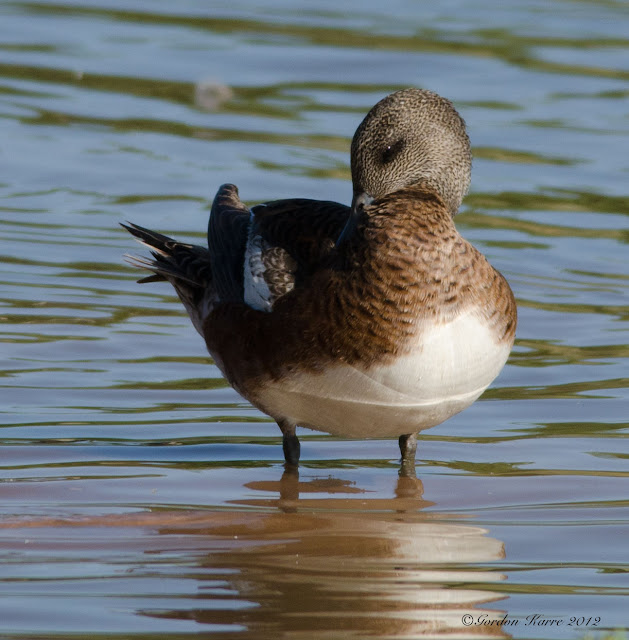After spending a week in the White Mountains and also in the Madera Canyon areas of Arizona a week ago, I figured it was time to stay home on Saturday and Sunday to recuperate. During my time away from home, there were a few intriguing bird sightings of interest in and around Phoenix. Guess I just could not resist checking out a couple of these just to see if the birds were still around or not. On Sunday morning, decided to check out the Glendale Recharge Ponds in the west valley to see if the Roseate Spoonbill might still be hanging out. It was not meant to be as I could not locate it in the couple of basins that actually still held water. But I still found some interesting birds and was able to capture a couple of interesting photos in the process. It is almost never a waste of time to go birding when the birds can be so darn entertaining and interesting.
The most numerous birds on the pond that early morning were Wilson's Phalaropes. These birds are usually only seen in Arizona in the spring and fall as migrants though the state. Very rarely do we get to see them in their bright colorful breeding plumage, but they are always a joy to see and watch.
Wilson's Phalarope
Wilson's Phalarope
Also present were 3 American Avocets that also were not in their bright breeding plumage but no matter, they are always an elegant and graceful bird to observe. This one appears to be a female as the females have a stronger upturned bill than the males do.
American Avocet-Female
Another bird that is quite common around water in the winter time in Arizona is the Least Sandpiper as many of them will spend their winters here. Note the yellowish legs of this bird which helps to define the difference from the Western Sandpiper.
Least Sandpiper
And finally as I was walking down low in one of the dry ponds, a Killdeer landed on the path near me. I use this vantage point when birding at these ponds as the birds in the ponds with water do not see you and when you step up to peek over the pathway you normally get better views before they all spook and fly away. Glendale Recharge Ponds are devoid of trees, so hiding from the birds can be quite a challenge. It was interesting to see and photograph a Killdeer at eye level.
Killdeer
Since the spoonbill did not make an appearance, I decided to head across the valley to the Gilbert Water Ranch to see if I could locate another rarity that had just appeared a couple of days before. When I arrived at pond 2 where this target bird had been sighted I also found 6 other birders there watching for it (Scott, Fonda, and Lindsey and her father, plus 2 others). So while we were waiting to see if this bird would come out of hiding I captured and couple of other photos that I liked. One was an American Wigeon and one was a female Mallard. The wigeon is not a rare bird by any means but they usually do not arrive for the winter this early in the fall. The female Mallard was showing off it characteristic bright blue speculum and the sunlight was hitting it just right for a photo.
American Wigeon
Mallard-Female
And finally after an hour wait, the mystery bird did make an appearance on the far side of the pond and thanks to Lindsey and her scope and her running me down to find me, I got some good looks at my first Purple Gallinule. This one is a juvenile and they are not seen in Arizona very often. A few of them stray north out of Mexico from time to time, so it was nice to add another new life bird to my list. Now my goal is to see one in adult plumage and to capture a much better photo than what I could manage this time. This photo was taken from quite a distance, but once again a bad photo is better than no photo when it comes to a new life bird.
Purple Gallinule-Juvenile



















































